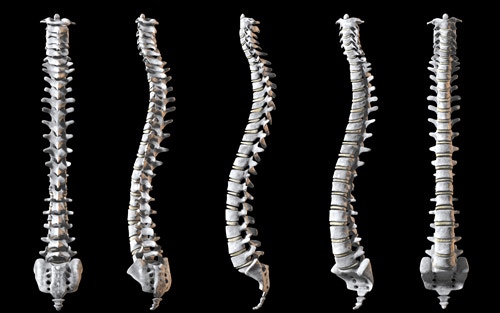That pain in your back and neck could be from bad posture. Millions of people suffer from this, and many rely on pain medication to get through the day. What if you didn’t need any drugs to fix it?

Good posture, like poor posture, is habitual. By making good posture a habit, you can avoid eventual debilitating pain, medication, and chronic symptoms like headaches and heartburn.
yourfootpalace.com discusses the differences between good and poor posture, ways to correct and improve your posture, and how to make it a lasting habit.
What is Good Posture
Awareness of what good posture is will help you make it routine. Posture is the manner in which you hold your body while sitting, standing, or sleeping, known as static posture and walking, running, or lifting, known as dynamic posture.

Good posture refers to the three natural curves present in a healthy spine, one at the neck, one at the mid-back, and one at the lower back. Correct posture maintains these curves without increasing them.
Likewise, if you were to look directly at the front or back of the body, the 33 vertebrae that form the spinal column should appear completely vertical.

Furthermore, having good posture depends on the constant awareness of holding your body in a way that results in the least amount of strain on your back.
What is Bad Posture
Bad or poor posture results from certain muscle groups tightening or strengthening, while others lengthen or weaken. This causes a muscular imbalance which results from daily repetitive activities.

While you may not notice it in its beginning stages, poor posture may result in the following:
• Back Pain
• Headache
• Poor Balance
• Muscle Fatigue
• Difficulty Breathing
• Incontinence
• Acid Reflux
• Heartburn
• Constipation
• Slouching
• Body Aches and Pains
If you suspect that poor posture is a contributing factor to any adverse condition you are experiencing, make an appointment with your primary care physician to rule out other potentially more serious causes.
How to Improve Your Posture
To change your posture habits, you need to identify the static and dynamic positions that created the problem.
The following will help you make good posture a habit, taking stress off of your back and reducing the ill effects of poor posture:
Neutral Spine Position – The neutral spine position relieves pressure from the spine, promotes better breathing, and even reduces abdominal pressure. To achieve this position while sitting:
- Bring your shoulders down and back
- Pull your head to an upright (slightly back) position
- Tighten your core muscles
- Pull in your stomach as if you were tying the drawstring on a pair of sweats
When standing, shift your weight to the balls of your feet, keep your feet about shoulder width apart, and slightly bend your knees while repeating the 4 steps above.
At first, this may be slightly uncomfortable. Keep in mind that you are engaging specific muscles in a way that they are not accustomed to and telling others to relax. This slight discomfort will quickly fade away as you regain a balance between them.
Use this position as your example when adjusting your chair, standing, or walking posture. The more you practice, the more easily it will become habitual.
Core Exercises – Core muscles in the abdomen, back and pelvic floor all work to support the spine. The following easy exercises will help you strengthen your core muscles and further improve your posture:
• Seated Leg Lifts (Can be done practically anywhere)
• Sit-Ups (Crunches are very effective as well)
• Push-Ups (On the floor or inclined)
• Practice Yoga (Nearly everything in yoga engages the core muscles)
• Walk with Proper Posture (20 minutes to 1 hour per day)

Note: If you have lower back pain, consult your primary care physician, or a physical therapist before beginning any exercise routine.
Reminders – Old habits are hard to break, and when you are dealing with posture, your own muscles are working against you in the beginning. Until you have made good posture a habit, use the following to remind you to “straighten up:”
• Leave sticky notes in plain sight on your desk and in areas where you spend a lot of time.
• Get lumbar support pillows for the chairs at work and at home (these can be a bit uncomfortable at first, but are terrific reminders to straighten up).
• Enlist your coworkers, friends, and family to help you avoid poor posture.
• Adjust the seat and mirrors in your vehicle so that you are compelled to sit in a neutral spine position.

Over time, good posture will become habitual, just as poor posture did. Fortunately, this is one habit that serves a healthy purpose and costs nothing to feed.
Good Posture is a Habit Worth Keeping
Don’t let poor posture rob you of your quality of life. By making simple adjustments throughout your daily activities, you can improve your health and avoid developing some chronic conditions.
In this article, you discovered the differences between good and poor posture, what you can do to eliminate bad posture, and how you can make it a healthy habit.
While the effects of habitual bad posture are gradual, they can cause serious health problems as you mature and get older. Just by making a few simple changes, you can make good posture a permanent habit and help your body perform at its peak.
Sources:
https://www.health.harvard.edu/staying-healthy/3-surprising-risks-of-poor-posture
https://health.clevelandclinic.org/health-effects-of-poor-posture/
https://acatoday.org/content/posture-power-how-to-correct-your-body-alignment
https://medlineplus.gov/guidetogoodposture.html
(706) 521-5290
(678) 963-5958